 All plants contain protein, and here we will list some of the big ones. If the food has more protein in it than the equivalent 3 ounces of steak, more than 21 grams per 3 ounces, we’ll put an asterisk on it.
Beans are often viewed as a primary protein source, and they are loaded with protein, as we will see. They are not a complete protein, though, so they shouldn’t be the only source of protein on your menu.
When it comes to beans, 3 ounces of:
All plants contain protein, and here we will list some of the big ones. If the food has more protein in it than the equivalent 3 ounces of steak, more than 21 grams per 3 ounces, we’ll put an asterisk on it.
Beans are often viewed as a primary protein source, and they are loaded with protein, as we will see. They are not a complete protein, though, so they shouldn’t be the only source of protein on your menu.
When it comes to beans, 3 ounces of:
- Pinto Beans have 23.4 grams of protein*
- Kidney Beans have 20 grams of protein
- Adzuki Beans have 17 grams of protein
- Black Beans have 6 grams of protein
- Lima Beans have 6.5 grams of protein
- Great Northern Beans have 7.2 grams of protein
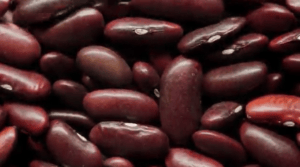 Both peas and beans are legumes. There are about 16,000 types of beans and legumes grown all over the world in different sizes, shapes, colors, and textures. While they both belong to the family Leguminosae or Fabaceae, beans and peas are completely different plants, coming from different genus and species. We’re not going to go into that debate, but we have to list this protein source here because it’s another plant-based protein power source.
When it comes to legumes, 3 ounces of:
Both peas and beans are legumes. There are about 16,000 types of beans and legumes grown all over the world in different sizes, shapes, colors, and textures. While they both belong to the family Leguminosae or Fabaceae, beans and peas are completely different plants, coming from different genus and species. We’re not going to go into that debate, but we have to list this protein source here because it’s another plant-based protein power source.
When it comes to legumes, 3 ounces of:
- Lupini Beans have 31 grams of protein*
- Soybeans have 31 grams of protein*
- Lentils have 22 grams of protein*
- Peanuts have 22.2 grams of protein*
- Chickpeas have 16.3 grams of protein
- Green Peas have 5 grams of protein
- Lima Beans have 6.5 grams of protein
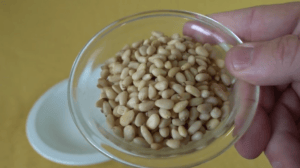 Here are some tree nuts with their protein equivalency per 3 ounces:
Here are some tree nuts with their protein equivalency per 3 ounces:
- Black Walnuts have 20.4 grams of protein
- Almonds have 18.1 grams of protein
- Pistachios 17.4 grams of protein
- Walnuts have 13 grams of protein
- Hazel Nuts have 12.9 grams of protein
- Brazil Nuts have 12 grams of protein
- Hickory Nuts have 10.8 grams of protein
- Pine Nuts have 9.9 grams of protein
- Pili Nuts have 9 grams of protein
- Acorns have 6.9 grams of protein
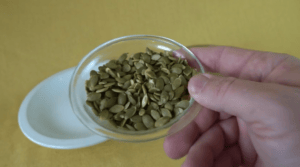 Seeds, like nuts, get touted as a protein powerhouse, and they are, with at least one ranking higher than that 3-ounce steak.
Seeds, like nuts, get touted as a protein powerhouse, and they are, with at least one ranking higher than that 3-ounce steak.
- Hemp Hearts have 26.4 grams of protein*
- Pumpkin seeds have 19.8 grams of protein
- Sunflower seeds have 17.4 grams of protein
- Flax seeds have 15.6 grams of protein
- Sesame seeds have 15 grams of protein
- Chia seeds have 14.1 grams of protein
- Buckwheat has 11.4 grams of protein
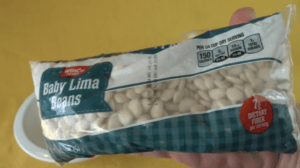 We purposely picked recipes that have unlimited variations. Chili fits that bill. This is a protein and fiber powerhouse that you can flavor and spice up as you like. We are going to go light on the spice with this version.
Chop and saute one large onion, three garlic cloves, and maybe a hot pepper in a tablespoon of olive oil or the fat of your choice. To this add a few tablespoons of tomato paste and stir. Add a little water if needed to keep the contents from sticking. To this, we will add 3 ounces each of black beans, lima beans, white beans, lentils, and pinto beans. Stir those in until all ingredients are well incorporated. As that cooks, we’ll add two large pinches of sea salt. After a few minutes, we add 24 ounces of chicken stock and 16 ounces of water. Finally, we will add 2 tablespoons of taco mix chile powder and a ¼ teaspoon of cumin as my seasonings. On a stovetop or fire you would bring this to a boil, cover, then lower it to a simmer for a few hours until the beans are soft, adding water as needed. In our pressure cooker, we just set it on high for 30 minutes, and that’s it. This makes about 2-3 quarts of chili that has about 66 grams of protein, but we wouldn’t suggest you try and eat all that chili in one sitting.
Pseudocereals & Grains
We purposely picked recipes that have unlimited variations. Chili fits that bill. This is a protein and fiber powerhouse that you can flavor and spice up as you like. We are going to go light on the spice with this version.
Chop and saute one large onion, three garlic cloves, and maybe a hot pepper in a tablespoon of olive oil or the fat of your choice. To this add a few tablespoons of tomato paste and stir. Add a little water if needed to keep the contents from sticking. To this, we will add 3 ounces each of black beans, lima beans, white beans, lentils, and pinto beans. Stir those in until all ingredients are well incorporated. As that cooks, we’ll add two large pinches of sea salt. After a few minutes, we add 24 ounces of chicken stock and 16 ounces of water. Finally, we will add 2 tablespoons of taco mix chile powder and a ¼ teaspoon of cumin as my seasonings. On a stovetop or fire you would bring this to a boil, cover, then lower it to a simmer for a few hours until the beans are soft, adding water as needed. In our pressure cooker, we just set it on high for 30 minutes, and that’s it. This makes about 2-3 quarts of chili that has about 66 grams of protein, but we wouldn’t suggest you try and eat all that chili in one sitting.
Pseudocereals & Grains
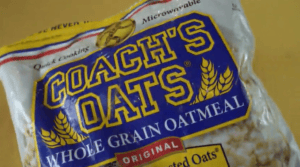 Some pseudocereals and grains have high levels of oxalates in them and should be cooked, but the cooking process also denatures the protein and destroys some of the amino acids.
Some pseudocereals and grains have high levels of oxalates in them and should be cooked, but the cooking process also denatures the protein and destroys some of the amino acids.
- Whole Oats have 14.4 grams of protein
- Teff has 12 grams of protein
- Spelt has 12 grams of protein
- Amaranth has 11.4 grams of protein
- Quinoa has 10.8 grams of protein
- Millet has 10 grams of protein
- Wheat flour has 9 grams of protein
 This is our favorite oatmeal cookie recipe. Cream together ¾ cup softened or melted butter with 1 cup brown sugar and a ½ cup white sugar. Add 4 teaspoons vanilla and continue to mix until all is incorporated. Add two eggs and stir. When that is all incorporated, add 1 teaspoon baking powder, ¼ teaspoon baking soda, and 1 ¾ cups all-purpose flour, and ¼ teaspoon salt. Mix until well incorporated. To this, we are going to add an ounce and a half each of flax seeds and sesame seeds and one-ounce chia seeds, but to make the protein in those hard seeds more bioavailable we are going to pulse them in the blender. Mix until incorporated. We’re also going to add 3 ounces of shaved almonds. Finally, add 2 cups whole oats and mix until all ingredients are incorporated. Roll these into 1 ½ balls onto a parchment paper-lined cookie sheet and allow an inch or two between cookies. Cook for 12-15 minutes in a 375-degree, 190 celsius, oven. Place on a wire rack to cool. We think these cookies taste better after they have cooled. This will make roughly 2 dozen cookies. The entire batch we estimate to have about 114 grams protein, which is 4.75 grams per cookie.
Amino Acids
Don’t view protein like you do other nutrients. We often think of nutrients like oxygen. The O2 you breathe in is actually two oxygen atoms, and these get transferred from the lungs to hemoglobin, pumped to cells, and eventually directly absorbed into the cell sap of all our individual cells. Some nutrients are like that– iron and other minerals, for instance. Protein is nothing like that, which is why all the nutritional labels and your body’s requirements are all over the place in their estimations.
Let us simplify this by explaining that protein comes in two basic types- natured and denatured. Just picture that like tightly held together and inaccessible versus loose and accessible. Cooking, chewing, and digestion denatures these proteins. You might take in 21 grams of protein in a 3-ounce steak, but your body may only be able to break down a fraction of that. Also, the body doesn’t retain the protein in its protein form. The body breaks down consumed protein into amino acids and absorbs it. Then, it is used to build muscles and organs, to make hormones and antibodies, to be stored as fat, and to be burned as energy. The body makes the proteins it needs from the amino acids. So, the protein we take in gets broken down into amino acids and modified or manufactured into proteins again to fit the body’s needs. Roughly there are 500 amino acids in nature. Our bodies use just about 20 of those. 11 of those the body makes from food ingested, and the other nine it needs from food digested. What we call a “complete protein” contains all 9 of those essential amino acids.
It is very possible that if you only had one protein source, you might not have all of the amino acids you need. This would result in a short time in a protein deficiency- hypoproteinemia. Your body would then turn on itself, at first, and cannibalize cells to get to the amino acids it needs. Eventually, your muscles will wither, bones will be more susceptible to fractures, immunity systems will falter, your hair will fall out, and eyes and organs will fail, along with a decrease in hormones and enzymes needed to maintain physiology. Though the extreme effects onset gradually, they can begin mere days after protein in your diet drops.
To summarize what you need to know:
This is our favorite oatmeal cookie recipe. Cream together ¾ cup softened or melted butter with 1 cup brown sugar and a ½ cup white sugar. Add 4 teaspoons vanilla and continue to mix until all is incorporated. Add two eggs and stir. When that is all incorporated, add 1 teaspoon baking powder, ¼ teaspoon baking soda, and 1 ¾ cups all-purpose flour, and ¼ teaspoon salt. Mix until well incorporated. To this, we are going to add an ounce and a half each of flax seeds and sesame seeds and one-ounce chia seeds, but to make the protein in those hard seeds more bioavailable we are going to pulse them in the blender. Mix until incorporated. We’re also going to add 3 ounces of shaved almonds. Finally, add 2 cups whole oats and mix until all ingredients are incorporated. Roll these into 1 ½ balls onto a parchment paper-lined cookie sheet and allow an inch or two between cookies. Cook for 12-15 minutes in a 375-degree, 190 celsius, oven. Place on a wire rack to cool. We think these cookies taste better after they have cooled. This will make roughly 2 dozen cookies. The entire batch we estimate to have about 114 grams protein, which is 4.75 grams per cookie.
Amino Acids
Don’t view protein like you do other nutrients. We often think of nutrients like oxygen. The O2 you breathe in is actually two oxygen atoms, and these get transferred from the lungs to hemoglobin, pumped to cells, and eventually directly absorbed into the cell sap of all our individual cells. Some nutrients are like that– iron and other minerals, for instance. Protein is nothing like that, which is why all the nutritional labels and your body’s requirements are all over the place in their estimations.
Let us simplify this by explaining that protein comes in two basic types- natured and denatured. Just picture that like tightly held together and inaccessible versus loose and accessible. Cooking, chewing, and digestion denatures these proteins. You might take in 21 grams of protein in a 3-ounce steak, but your body may only be able to break down a fraction of that. Also, the body doesn’t retain the protein in its protein form. The body breaks down consumed protein into amino acids and absorbs it. Then, it is used to build muscles and organs, to make hormones and antibodies, to be stored as fat, and to be burned as energy. The body makes the proteins it needs from the amino acids. So, the protein we take in gets broken down into amino acids and modified or manufactured into proteins again to fit the body’s needs. Roughly there are 500 amino acids in nature. Our bodies use just about 20 of those. 11 of those the body makes from food ingested, and the other nine it needs from food digested. What we call a “complete protein” contains all 9 of those essential amino acids.
It is very possible that if you only had one protein source, you might not have all of the amino acids you need. This would result in a short time in a protein deficiency- hypoproteinemia. Your body would then turn on itself, at first, and cannibalize cells to get to the amino acids it needs. Eventually, your muscles will wither, bones will be more susceptible to fractures, immunity systems will falter, your hair will fall out, and eyes and organs will fail, along with a decrease in hormones and enzymes needed to maintain physiology. Though the extreme effects onset gradually, they can begin mere days after protein in your diet drops.
To summarize what you need to know:
- You can’t store protein in protein form
- Protein must be broken down into amino acids by the body
- Your body can’t function without amino acids.
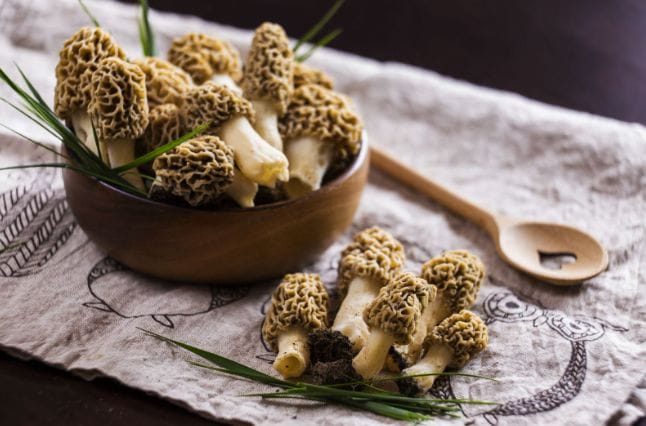 There are a lot of foods that contain protein in small amounts. We will add mushrooms and vegetables here, though they don’t contain much per ounce.
There are a lot of foods that contain protein in small amounts. We will add mushrooms and vegetables here, though they don’t contain much per ounce.
- Oyster mushrooms have 2.7 grams of protein
- Broccoli has 2.4 grams of protein
- Spinach has 2.4 grams of protein
- Shiitake has 1.8 grams of protein
- Morels have 1.8 grams of protein
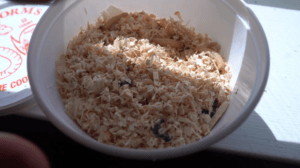 Most will find this unappealing, but it’s worth meaning so you know. Here is what 3 ounces of insects equates to as a protein source:
Most will find this unappealing, but it’s worth meaning so you know. Here is what 3 ounces of insects equates to as a protein source:
- Crickets have 48 grams of protein*
- Worms have 20 grams of protein*
- Beetles have 19 grams of protein
- Ants have 12 grams of protein
- Meal Worms have 17 grams of protein

